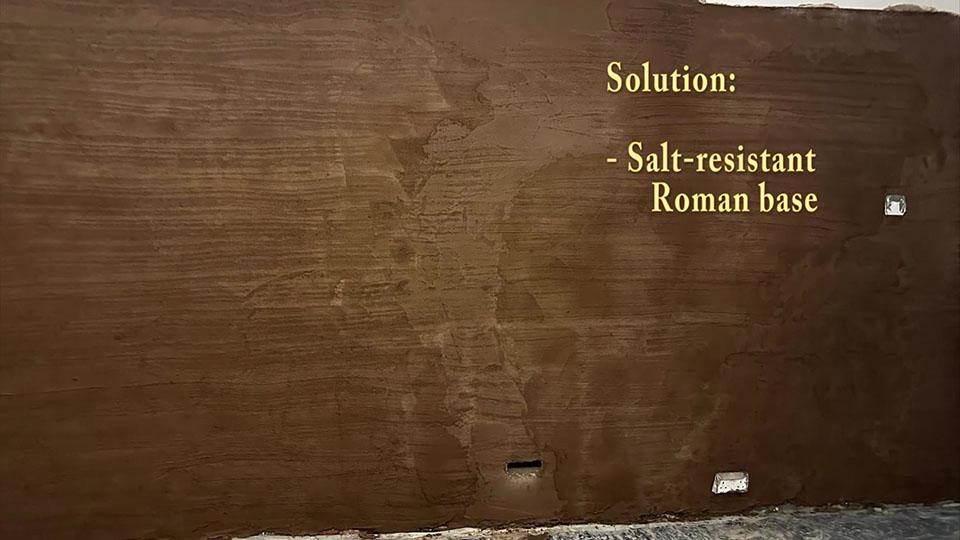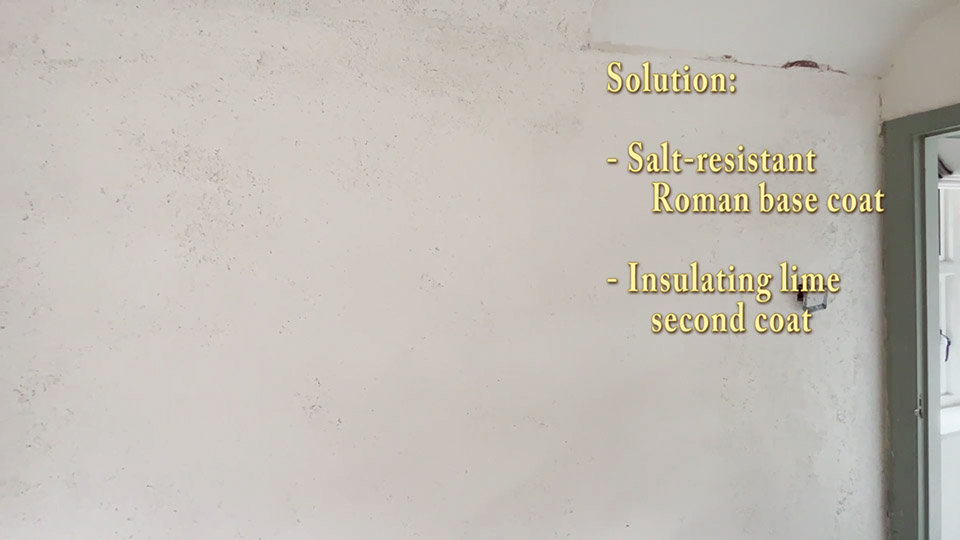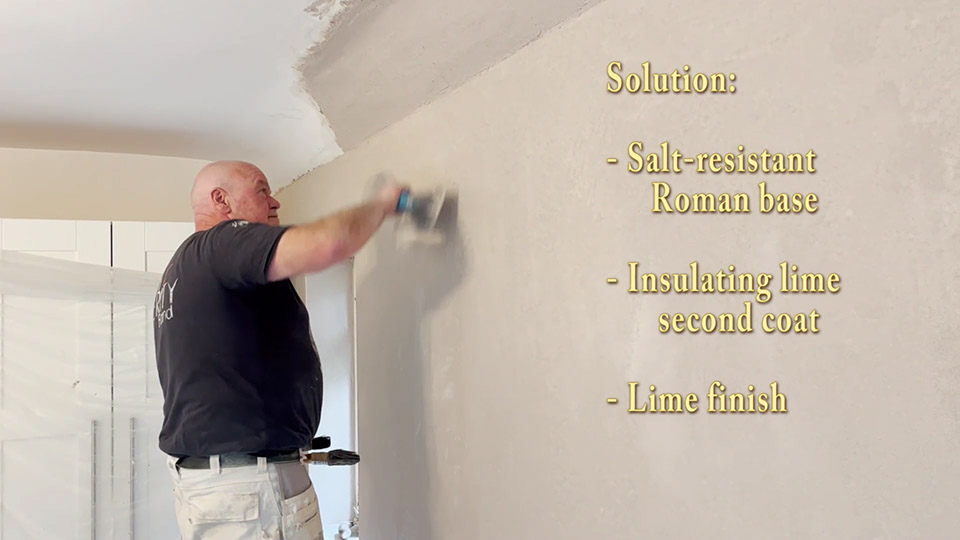Chimney breasts, how to sort out ugly discolourations?
Lets talk about
The most mysterious dampness problems on chimney breasts
There exists a particular type of ‘dampness’ issue affecting chimney breasts, leading to problems such as discolouration, inexplicable damp patches, flaking paint, and crumbling plaster.
These issues may manifest even on internal walls not exposed to driving rain or any discernible moisture source, leaving owners of older buildings perplexed regarding the origins of these issues. The patches may exhibit a cyclical nature, fading during warmer summers only to resurface dramatically after intense rainfall, often occurring within the interior walls of the house.
Understand The Why
The case study below will provide you with a comprehensive understanding of the intricacies surrounding chimney breasts and fireplaces, explaining why these dampness problems are so stubborn and just keep coming back.

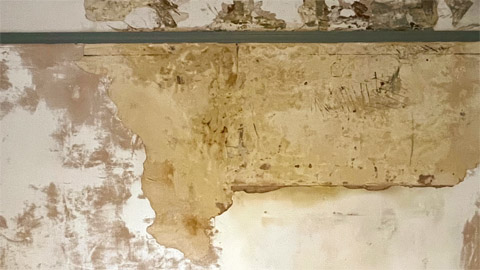
Now, upon seeing such damage, one’s initial thought might be that there must be some sort of moisture ingress or a chimney leak. However, in this specific situation, our client has already addressed pretty much everything they could think of: chimney, roof, flashing around the chimney, and rendering over the chimney breast. They even took down one of the chimneys and roofed over it. So, at this point, it has become really perplexing:
Why do these discolourations keep coming back?
Professional Dampness Survey, Laboratory Level Analysis
At this point, the building professionals at Core Conservation embarked on a meticulous investigation, conducting a dampness survey with a particular emphasis on critical areas. The findings revealed that the client had done an admirable job in rectifying damp issues, and indeed, the masonry is now thoroughly dry.
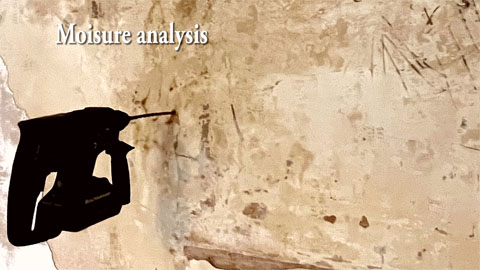
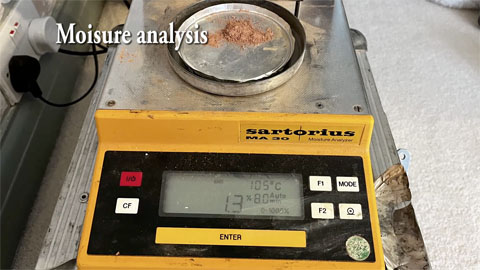
We also analysed the type and extent of salt contamination in the samples using chemical test strips, and found significant sulphate contamination. Sulphates, being the byproducts of coal and log burning, are commonly referred to as chimney salts.
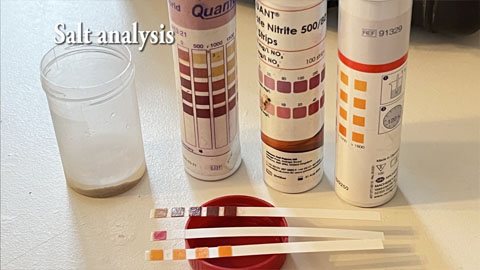
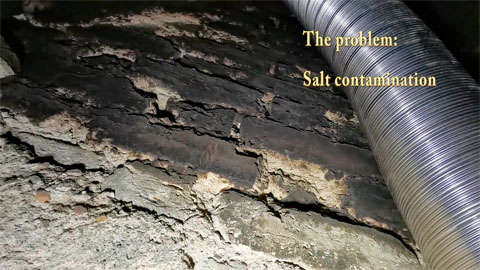
In instances where a century’s worth of log or coal burning occurs in a fireplace, a significant amount of soot and ashes, laden with sulphates, accumulates throughout the flue.
Due to fluctuating temperatures and leaks from rainwater, these sulphates dissolve and permeate the masonry, resulting in yellow or brown discoloured patches along the chimney breasts; salty discolourations that can be highly corrosive to the plaster.
If left untreated for an extended period, mysterious damp patches, flaking paint, and ultimately crumbling plaster become inevitable outcomes of these circumstances.
Excessive salt contamination beyond a certain threshold can even draw moisture from the room’s atmosphere. On rainy days, when the air’s relative humidity is elevated, this moisture absorption alone may suffice to generate damp patches. In cases of extreme salt contamination, these patches become permanent. This explanation elucidates the origin of those mysterious damp patches, which can occur on chimney breasts or around fireplaces.
If you have any queries regarding our building surveys and solutions, please feel free to get in touch.The team at Core Conservation utilises a wide array of state-of-the-art instrumentation, including non-invasive dampness microwave scanning, thermal imaging, and more.
You are welcome to call us and a conservation specialist will answer your project related questions, free of charge.
The Solution
#1 Always start with fixing any rainwater ingress
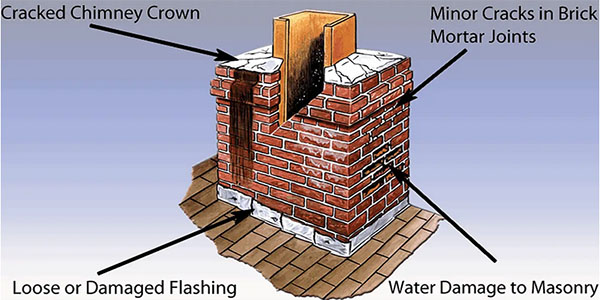
A comprehensive chimney inspection, paying close attention to every detail – from the chimney pot and cowl, to the condition of the chimney crown, the state of the masonry and pointing, and the flashing around the chimney – can typically identify the sources of water ingress, and rectifying these issues is crucial.
#2 Hack off the existing, salt-contaminated plaster. Do not attempt to skim over it!
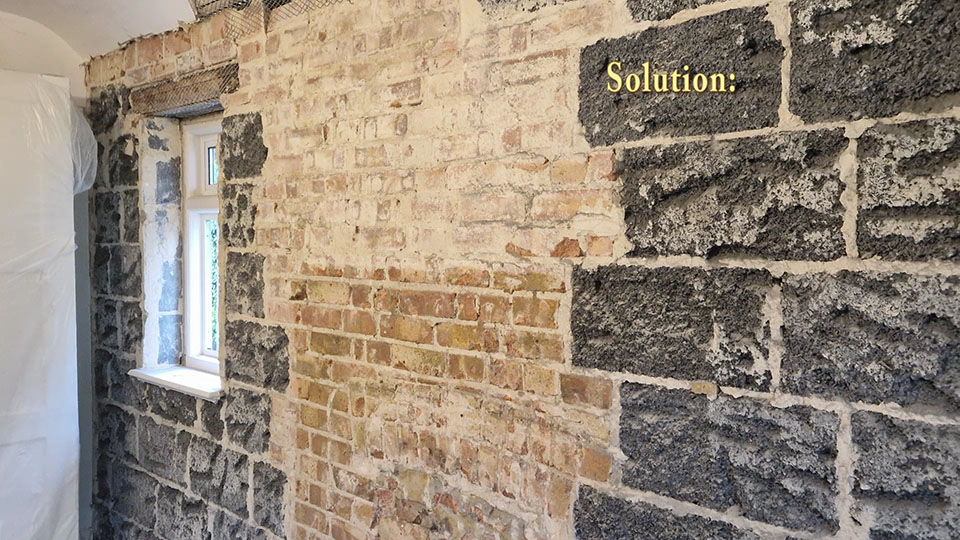
Removing the contaminated, old plaster, cleaning the surface to eliminate dust and salts, and then thoroughly wetting the surface are essential for ensuring good adhesion of the new, salt-resistant lime base coat.
#3 Apply salt-resistant lime base coat
In this specific example and with this specific client – because dampness problem is already sorted – the old, salt contaminated plaster did come off and a suitable salt resistant lime plastering system was applied.
The Rinzaffo MGN Roman lime base coat is both salt-resistant and breathable. This lime plaster can withstand the effects of all masonry salts, including chlorites (sea salts), nitrates (ground salts), and sulphates (chimney salts), for decades without breaking down. It also acts as a water barrier, protecting finished wall surfaces from potential water ingress from the chimney stack and preventing damages.
#4 Apply Lime Thermal Insulation
Applying a second coat of insulating lime plaster is crucial for these external walls. The warmer the wall, the greater the comfort achieved, not to mention the prevention of mould and fungi, which often thrive in environments where the room is warm, but the walls are too cold. In this specific case, we used the award-winning Termointonaco 2020 MGN, high performance insulating lime plaster.
#5 Apply a breathable lime finish
For this project, we opted to use the non-cracking and flexible traditional lime finish known Rasacol MGN for it’s longevity.
These steps effectively resolve a damp chimney breast for good.
Do you have any questions or maybe need free consultation over the phone? Do not hesitate to get in touch, we are dedicated to help you
Chimney breasts, how to sort out ugly discolourations? Read More »


